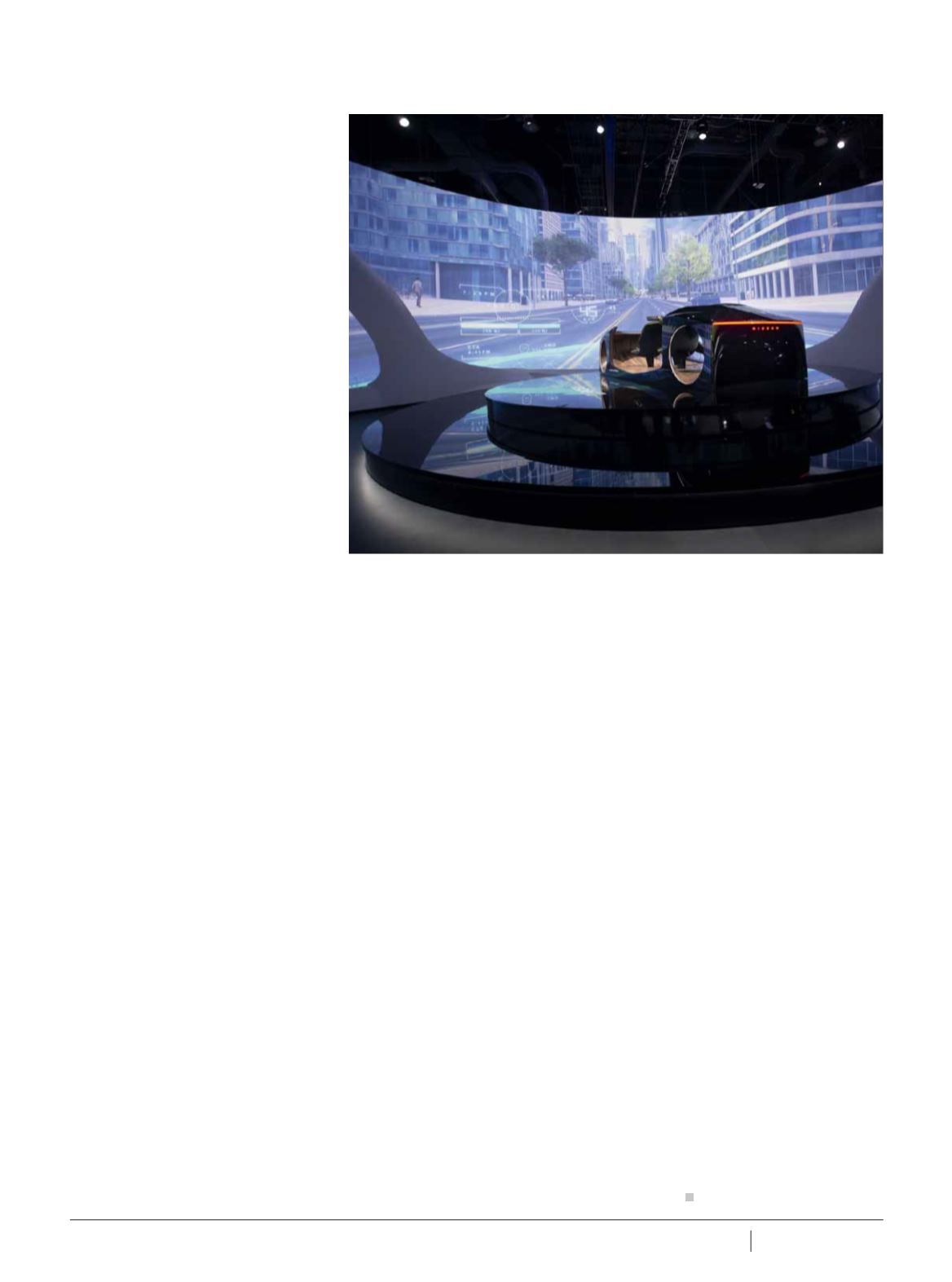

Spring 2019 ACROSS THE TRADES
5 9
anywhere, highlighting the prospect of
an entertaining but nonetheless safe
future driving experience backed by
Intel, which via its Mobileye subsidiary
is positioning itself as a leading player in
autonomous vehicle development with
the hi-tech computing power required to
make it all work.
It also brings into play the marketing
opportunities for big media giants like WB,
which have a captive audience in a highly
connected car with which to build strong
relations, screen movies, run trailers of
future films, identify nearby cinemas, help
them purchase movie tickets, and so on.
And those are just some of the obvious
applications we can imagine today.
Intel says the so-called “passenger
economy” brought with autonomous
cars will free up more than 250 million
hours of commuting time per year in the
world’s most congested cities, while the
future market for new in-vehicle apps
and content is an estimated $US200
billion – hence the heavy investments
now being made into R&D and exploring
how consumers will interact with
emerging forms of entertainment within
cars “once they are uncoupled from the
steering wheel”.
SO MUCH MORE TO SEE
There was so much more on display
at CES from the auto giants, including
Mercedes showing off the latest
application of its still-fresh MBUX
(or Mercedes-Benz User Experience)
infotainment system – via the new-
generation CLA Coupe – which is
underpinned by AI and deep learning,
including intelligent voice control with
natural speech recognition.
Among others, Nissan was there
demonstrating ‘Invisible to Visible’ (I2V)
technology which merges the real and
virtual worlds using sensors inside and
outside the vehicle with data from the
cloud, enabling the system to anticipate
what’s ahead – even behind a building or
around a corner.
Some smaller players also won plenty
of attention, notably electric vehicle
start-up Byton with its M-Byte SUV
concept featuring a mammoth 48”
‘Shared Experience Display’ that runs
the full length of the dashboard. Not
stopping there, M-Byte also includes a
7” tablet floating on the steering wheel
pad that stays upright as the tiller is
turned, and another 8” touchpad on the
centre console for the front passenger.
Byton calls the cabin a ‘mobile digital
lounge’ and, while we’re yet to see the
production version, the company says
M-Byte “represents the transformation
of the traditional car into a next-
generation smart device”.
As part of this, Byton is one of several
car-makers – others being Toyota/Lexus,
Audi, BMW and Ford – to join forces with
Amazon and its Alexa virtual assistant
and is working with the e-commerce
juggernaut to develop advanced in-
vehicle voice control functionality.
Indeed, Amazon’s work in this area
was a major talking point at the show,
with its potential to tap into the huge
automotive sector – both OEM and
aftermarket – and pave the way for new
advances in connectivity between car
and smart home.
Equally smart in our view was audio
giant Bose’s ‘Road Noise Control’ (RNC)
system that, for the first time, adapts
its intelligent wireless QuietComfort
noise-cancelling headphone tech to a
vehicle’s cabin – no small feat, given
controlling noise in a car is much more
difficult than the relatively small area
around your ears.
Vast resources are pumped into
reducing noise inside a vehicle,
generally focusing on sound-deadening
material and tyre spec, but here
Bose has used a combination of
accelerometers, proprietary signal-
processing software, microphones
and the audio system to electronically
control unwanted sound, calculating
an “acoustic cancellation signal” and
then delivering this through the car’s
speakers to reduce the targeted noise.
Harman was also there at CES with
parent company Samsung, presenting
an updated version of their digital
cockpit which is based on Samsung’s
Bixby intelligent platform and, in
similar fashion to Amazon’s tech,
offers high-level connectivity between
vehicle and home, such as enabling the
owner to remotely check the fuel tank
or start up the climate controls before
reaching the car.
This is the sort of functionality we
are not just getting our head around, but
are beginning to expect, which shows
just how far the car-makers have come
in recent years – and how we’re ready for
the ride.
Nissan’s ‘Invisible to Visible’ technology merges the real and virtual worlds.
















